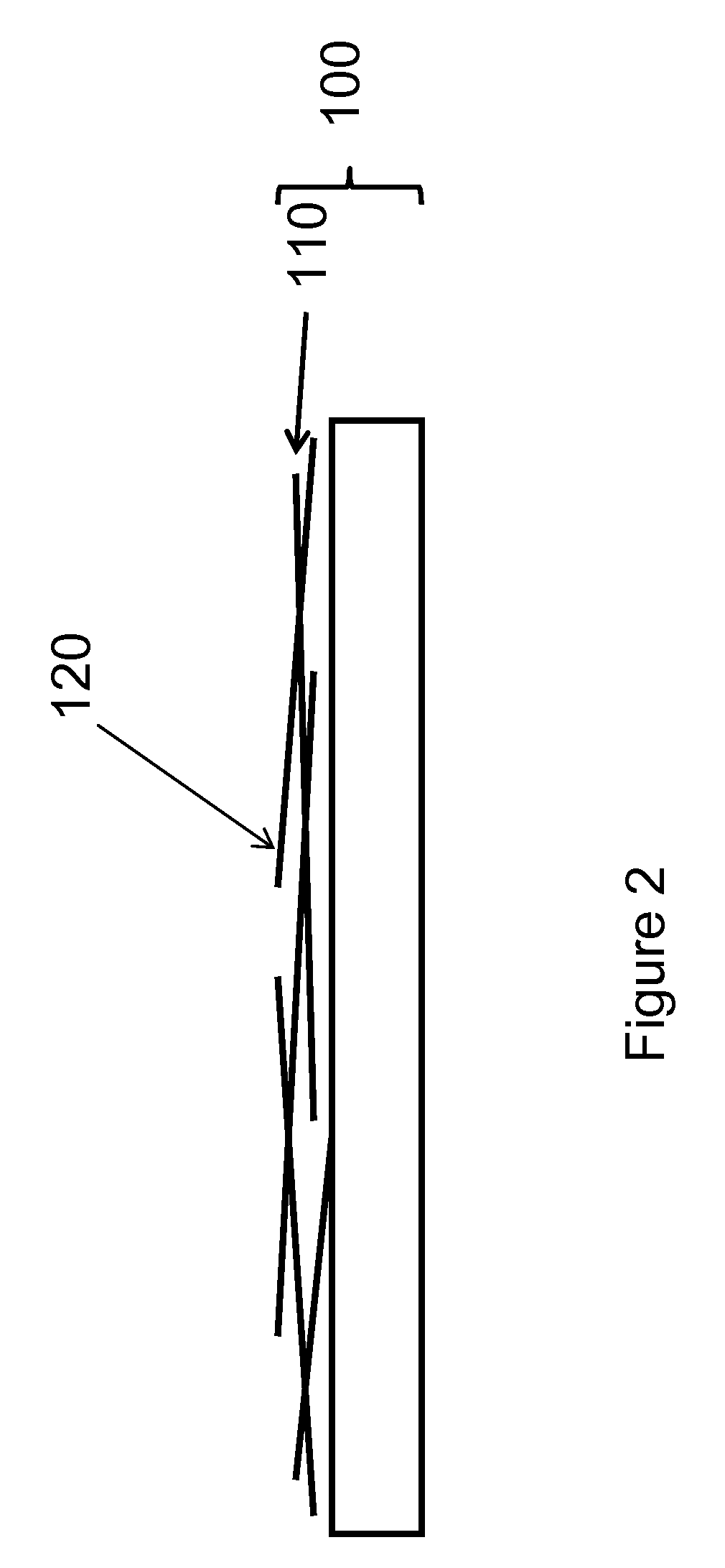Carbon nanotube-transparent conductive inorganic nanoparticles hybrid thin films for transparent conductive applications
a carbon nanotube and conductive coating technology, applied in the direction of conductive layers on insulating supports, traffic signals, ways, etc., can solve the problems of loss of optical transparencies, inability to meet the requirements of dense cnt networks, and difficult formation, etc., to achieve excellent mechanical strength, poor mechanical strength, and easy to form
- Summary
- Abstract
- Description
- Claims
- Application Information
AI Technical Summary
Benefits of technology
Problems solved by technology
Method used
Image
Examples
example 1
Preparation of the CNT INK from As-Produced CNT
[0072]The CNT ink consisting of negatively charged, unpurified carbon nanotubes was prepared by adding 100 mg of as produced commercial single walled carbon nanotubes to a solution of 200 mg of polystyrene sulfonate in 100 ml of deionized water. The mixture was sonicated for 12 h in a bath sonicator. The mixture was left untouched for 48 hours and the supernatant liquid was decanted and bottled.
example 2
Preparation of CNT-INK from Purified CNT
[0073]The CNT ink consisting of negatively charged, purified CNT, was prepared by adding 50 mg of commercial single walled carbon nanotubes obtained as purified to a solution of 200 mg of polystyrene sulfonate in 100 ml of deionized water. The mixture was sonicated for 12 h in a bath sonicator. The mixture was left untouched for 48 hours and the supernatant liquid was decanted and bottled.
example 3
Preparation of ITO-INK
[0074]The ITO ink consisting of negatively charged ITO nanoparticles was prepared by adding 50 mg of as received commercial ITO nanoparticles having an average size of 50 nm (Alfa-Aesar) to 100 ml of deionized water. The pH of the solution was adjusted to 3 by the addition of hydrochloric acid. The mixture was sonicated in a bath sonicator for 1 h and it formed a shelf stable suspension. The mixture was used as such with no further centrifugation or decanting steps.
PUM
| Property | Measurement | Unit |
|---|---|---|
| surface roughness | aaaaa | aaaaa |
| optical transparency | aaaaa | aaaaa |
| optical transparency | aaaaa | aaaaa |
Abstract
Description
Claims
Application Information
 Login to View More
Login to View More - R&D
- Intellectual Property
- Life Sciences
- Materials
- Tech Scout
- Unparalleled Data Quality
- Higher Quality Content
- 60% Fewer Hallucinations
Browse by: Latest US Patents, China's latest patents, Technical Efficacy Thesaurus, Application Domain, Technology Topic, Popular Technical Reports.
© 2025 PatSnap. All rights reserved.Legal|Privacy policy|Modern Slavery Act Transparency Statement|Sitemap|About US| Contact US: help@patsnap.com



